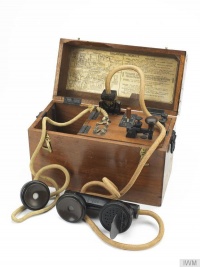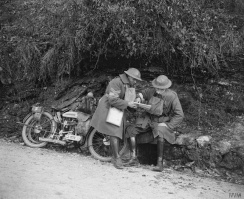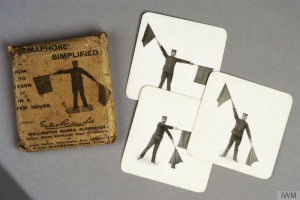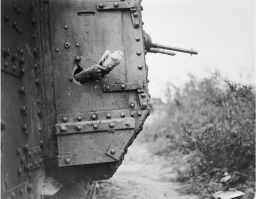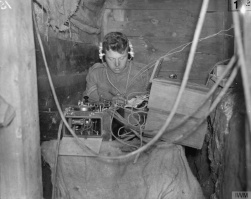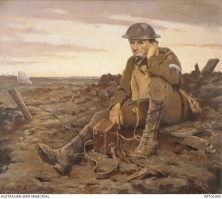Introduction↑
At the outbreak of World War One, a wide selection of signalling methods and technologies were available to all combatants. Ancient systems of communication such as carrier pigeons and despatch riders were used alongside and sometime interchangeably with modern communication systems such as the telephone and wireless telegraphy. Throughout the conflict, military communications evolved to meet new battlefield and military challenges. The outcome of battles was determined by an army’s ability to communicate on the battlefield and to effectively manage this communication. Speed and reliability were key to the utilisation of different systems of communications, old and new. However, technical aspects were not the sole deciding factor in terms of the success or failure of a system of communication: practicalities and idiosyncrasies proved to be just as influential in the acceptance and implementation in the oncoming conflict.
Utilization in Combat↑
On the Western Front, the British Army used telegraph cables and telephones to communicate between the front line soldiers and commanders. But heavy artillery bombardment meant these lines of communications were easily broken. They were also easily intercepted by the German Army, as were the very basic wireless telegraph sets used by the British Army. In 1915 and 1916, the “Fullerphone” was introduced to prevent German interception of British frontline telephone communications. Despite the risk of interception, the speed of telephone and telegraph communication meant they were the most commonly used telecommunications systems by the British Army.
Away from the trenches, the Royal Navy faced similar problems of reliable communication and interception of their signals. For short-distance communications, the navy relied on semaphore flags, while using more modern but also more easily intercepted wireless telegraphy sets for long-distance communication.
During the war, aeroplanes developed rapidly from crude, kite-like aircraft to bomber and fighter aeroplanes capable of operating as weapons platforms. As the aeroplanes developed during the war, so did their means of communications. At the start of the war, pilots communicated using visual signalling such as rocking their wings and flags. By the end of the war, pilots were equipped with radio telephony (voice over radio) and were able to communicate over short distances with other aeroplanes and over longer distances with ground wireless stations. Aeroplanes mostly used wireless communications for artillery spotting: correcting the aims of British guns firing beyond the “line of sight”.
Conclusion↑
Many different systems of communications were used, developed, and adapted during the war. In 1918, when the stalemate ended with the German Spring Offensive followed by the Allied counter-offensive, more mobile systems of communication such as the wireless telegraph came to the fore and assisted in the Allied advance and success. Wartime developments in wireless communications continued to be used after the war ended. Radio communication in aeroplanes became commonplace and continue to be used today. Wireless sets used in the air and on the ground were brought home after the war and contributed to the popularity of amateur radio as well as the development of broadcast radio and the establishment of the BBC.
Elizabeth Bruton, University of Leeds
Section Editor: Catriona Pennell
Selected Bibliography
- Baker, W. J.: A history of the Marconi Company, London 1970: Methuen.
- Beesly, Patrick: Room 40. British naval intelligence 1914-18, San Diego 1982: Harcourt Brace Jovanovich.
- Meulstee, Louis: Wireless for the warrior. Spark to larkspur (wireless sets 1910-1948), compendium 1, Groenlo 2009: Emaus Uitgeverij.
- Priestley, Raymond E.: The Signal Service in the European war of 1914 to 1918 (France), Chatham 1921: W. & J. Mackay & Co.
- Winkler, Jonathan Reed: Nexus. Strategic communications and American security in World War I, Cambridge 2008: Harvard University Press.






